
Hi, and welcome to this video on climate! Today we’ll look at what climate is, see how it differs from weather, and take a closer look at specific climates from around the world.
What is Climate?
So what is climate? To understand this question, it’s important to know how climate differs from weather. Put simply, weather involves the day-to-day changes in a specified region, like rain, wind, and cloudiness. These short-term changes may be influenced by many factors, and can be the source of, or affected by, many natural disasters such as tornadoes and volcanoes.
The climate, on the other hand, essentially describes what the weather patterns are like over time across that same region. The environments formed by this long-term process generally govern the flora and fauna that flourish in different climate zones.
The climate of any region can generally be classified using a combination of latitude, elevation, and precipitation. Latitude is a measure of distance above or below the Equator (North/South), up to 90 degrees in either direction. As the equator represents a hot central “belt” around the planet where the most sunlight is received, it is considered the zero degrees “line” of latitude.
As you move farther away from the Equator you increase the angle of incidence at which sunlight is received. The increase of this angle inversely corresponds with the amount of sunlight that hits that part of the Earth, resulting in a decrease in the total amount of light available. Therefore, it can be said that as the distance from the Equator increases, the temperature decreases.
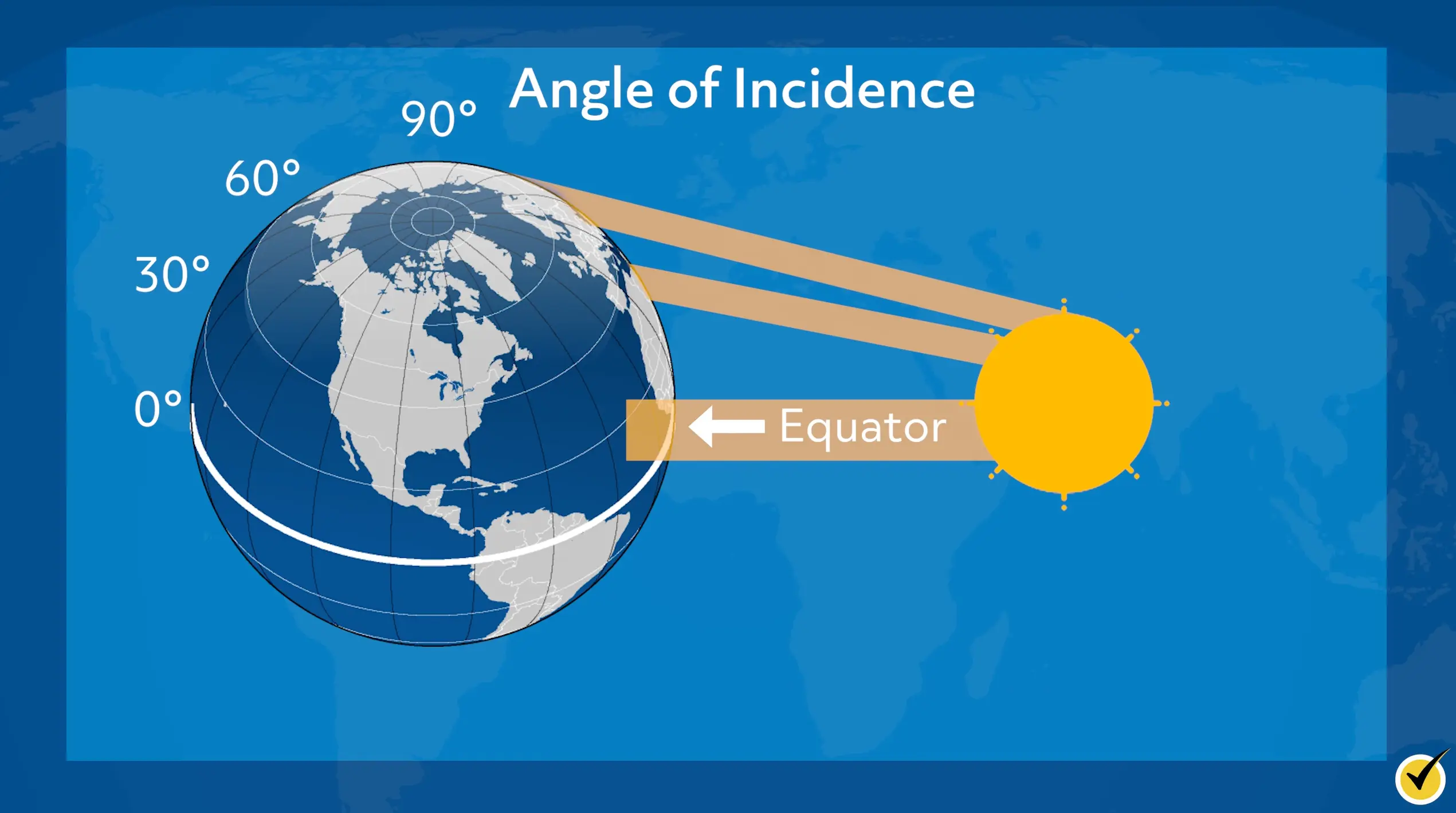
Elevation can be viewed under very similar conditions as latitude in that an inverse relationship also exists between increasing elevation and decreasing temperatures. The difference between these two factors lies in the causes of the inverse relationships; where latitude affects temperature through available sunlight, the elevational temperature change is attributed to the change in atmospheric pressure. Atmospheric pressure represents the weight of the atmosphere above any point, and affects temperature through a change in the density of the air molecules at different altitudes.
Precipitation, when compared to the previous elements of climate, is highly variable and depends on many complex factors, the most common and influential of which are nearby bodies of water, ocean currents, topography, vegetation, and prevailing winds. The reason precipitation has such a great effect on temperature can be attributed to the high specific heat of water. Due to the massive amounts of energy required to heat water up a single degree Celsius, the presence of water acts as an insulator against rapid temperature changes in the surrounding climate.
Now that we can more easily understand the difference between climates and how they are unique, let’s look at some of the different climates that are found around the world.
Tropical Rainforests
Tropical rainforest climates occur solely in the lower latitudes, specifically between the Tropic of Cancer at 23.5°N and the Tropic of Capricorn at 23.4°S. They are referred to as Equatorial climates and are characterized by the abundance of precipitation, high humidity, and consistent annual temperatures. The Köppen climate classification defines a tropical climate as a non-arid climate in which the mean temperature is about 64°F throughout the year. Examples include the Amazon in South America and the Congo in Africa.
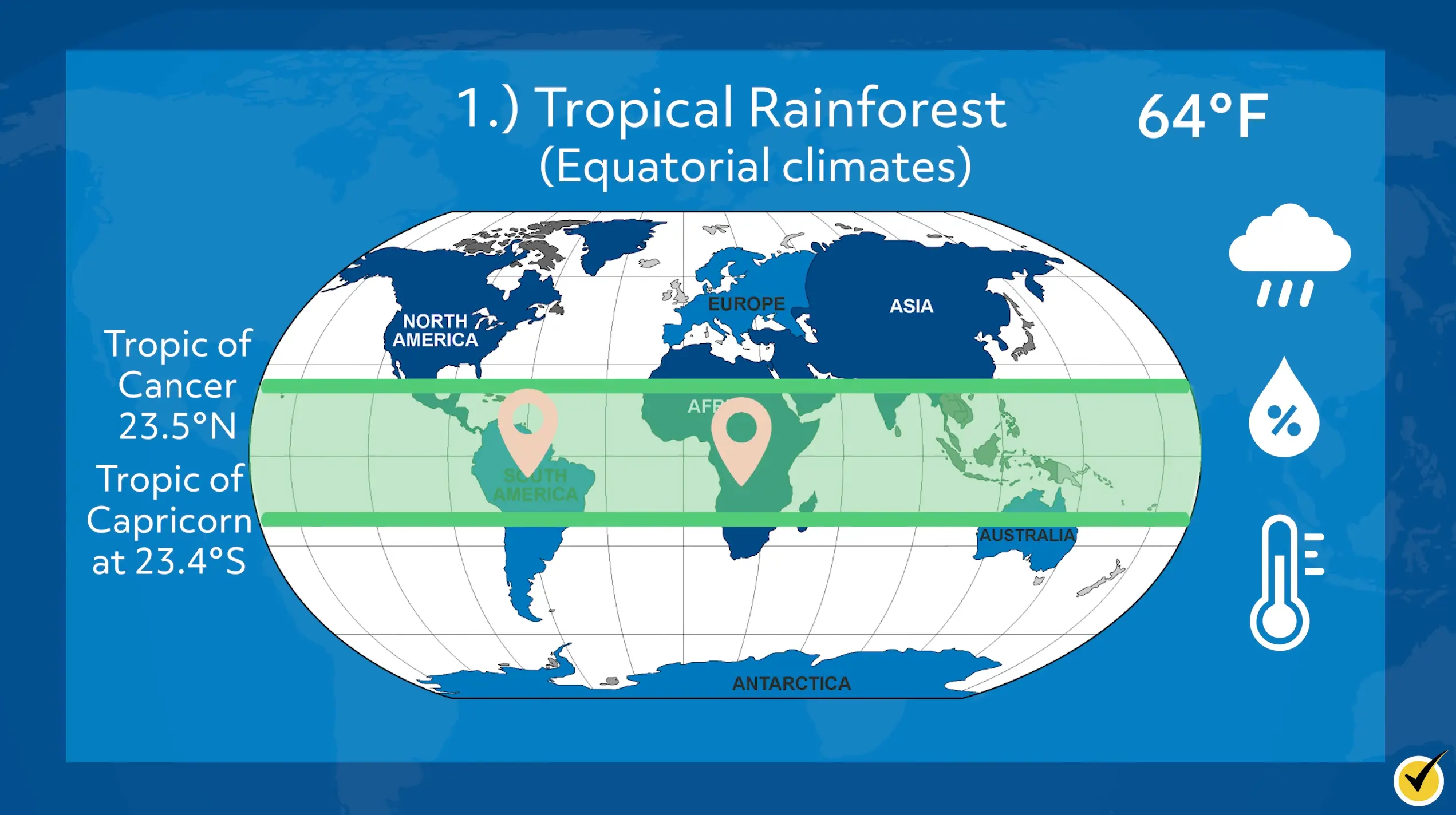
Savanna
Savanna environments, or tropical grasslands, also occur at the lower latitudes between the Tropics of Cancer and Capricorn. They are characterized much the same as Tropical climates, but are dominated by prevailing wind currents known as the Trade Winds and receive lower annual levels of rainfall. These currents bring to the savanna almost all precipitation during the summer months when they are the strongest, while keeping the same storms off the coast during the winter. The grass here is known to grow from six to twelve feet tall and is one of the notable features of this landscape. Examples of savanna climates can be found in East Africa, northern Australia, and southern Brazil.

Desert
Desert environments are some of the driest and most barren areas on the planet, creating harsh environments for the few plants and animals that live there. There are four main types of deserts: Subtropical, Semiarid, Coastal, and Cold.
Subtropical deserts can be found along the Tropic of Cancer and the Tropic of Capricorn. These are the hottest deserts on earth.
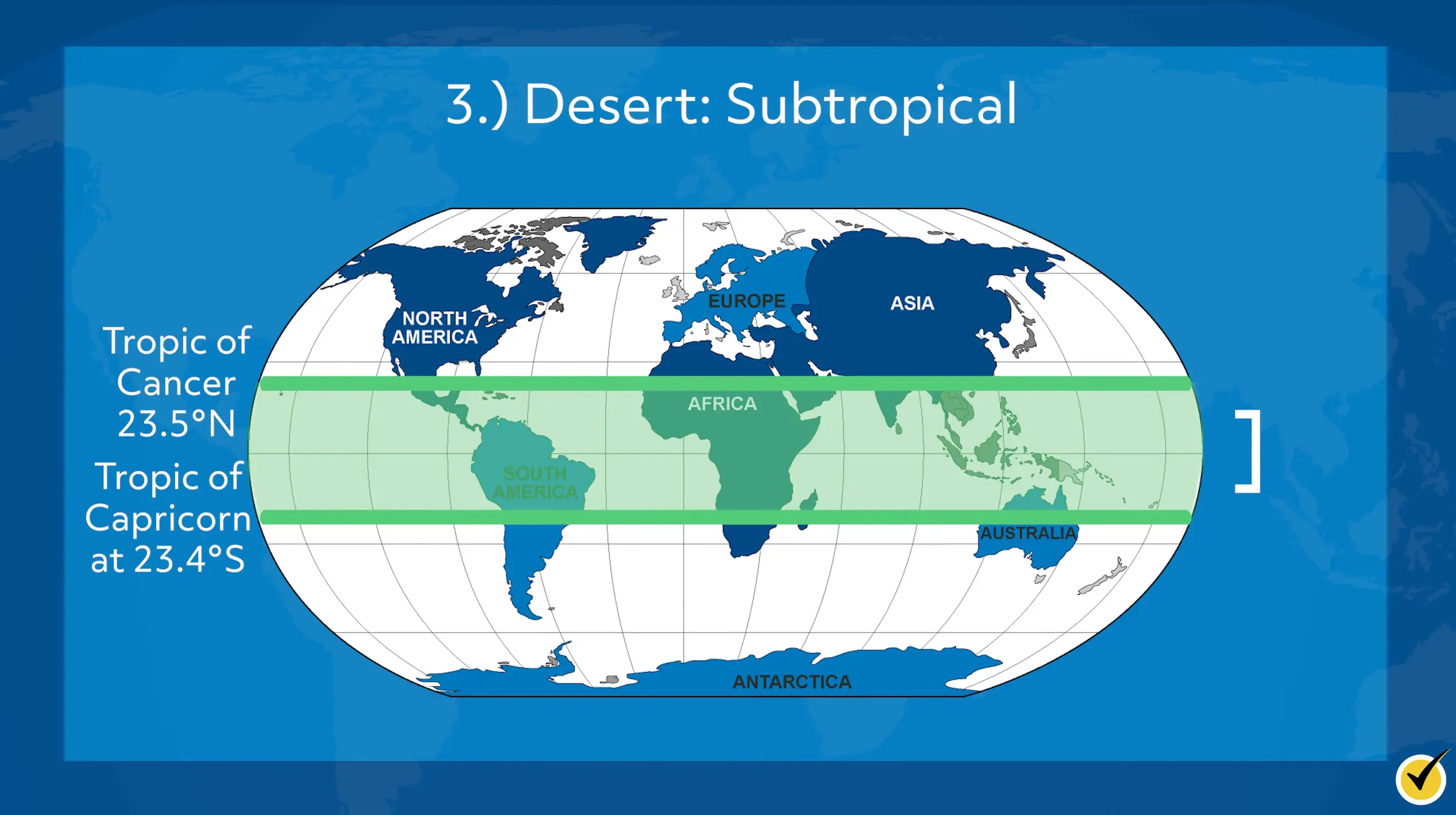
Semiarid deserts are found in every continent except Antarctica. They receive slightly more precipitation than subtropical deserts and have cold winters.

Coastal deserts are located on the western coast of certain continents and have more mild temperatures.

Cold deserts, sometimes referred to as “polar deserts”, are found in the arctic circle and parts of Antarctica. Winter temperatures in these deserts can reach -50°F.
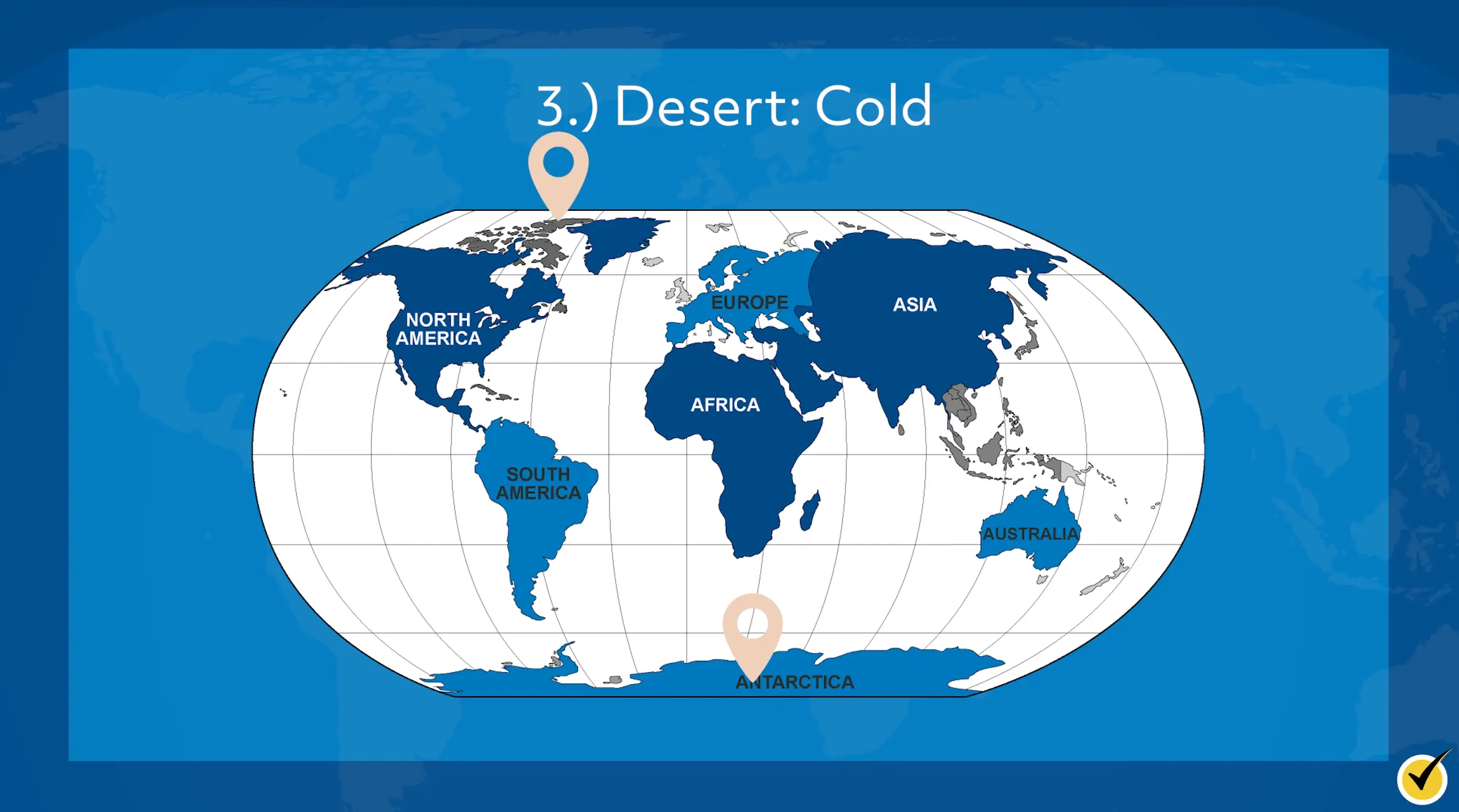
Steppe
A steppe refers to a large flatland that is populated by grasses and shrubs but devoid of trees. It is a unique climate type in that it is too arid for forests to establish themselves, yet receives too much precipitation to be counted as a desert. Because of these simple classifying characteristics, steppes occur under many different conditions across the planet and are not confined to a specific latitude or temperature range. For example, a steppe is known as a veld in South Africa while the North American prairie is technically a steppe.
Mediterranean
Mediterranean climates can be found between the 30°-40° latitudes bordering arid areas along the western coast of continents, as well as dominating the coasts of the Mediterranean Sea, such as Italy and Greece. They are known for their mild winters and hot, dry summers where there should be rainfall, often due to high-pressure cells when occurring outside of the namesake region.
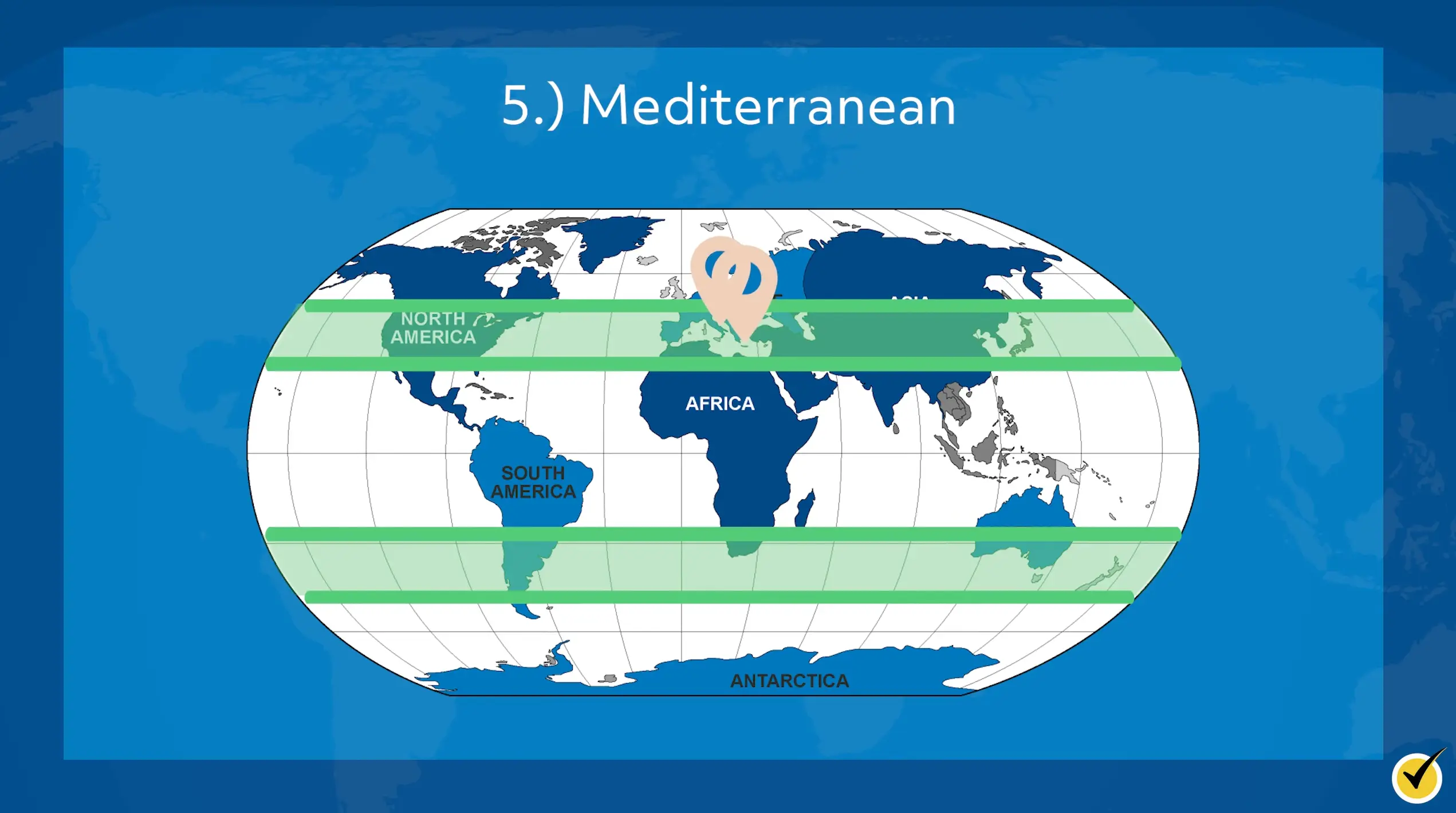
Marine
Marine environments are unique in that they generally occur on the western coasts of continents and are dominated by local oceanic conditions. As the wind currents are traveling east towards the land from the ocean, they deposit massive amounts of precipitation and energy that keep this type of climate humid. They are categorized by cool summers and warm winters, with rainfall year-round. The North American Pacific Northwest is an example of a marine climate.
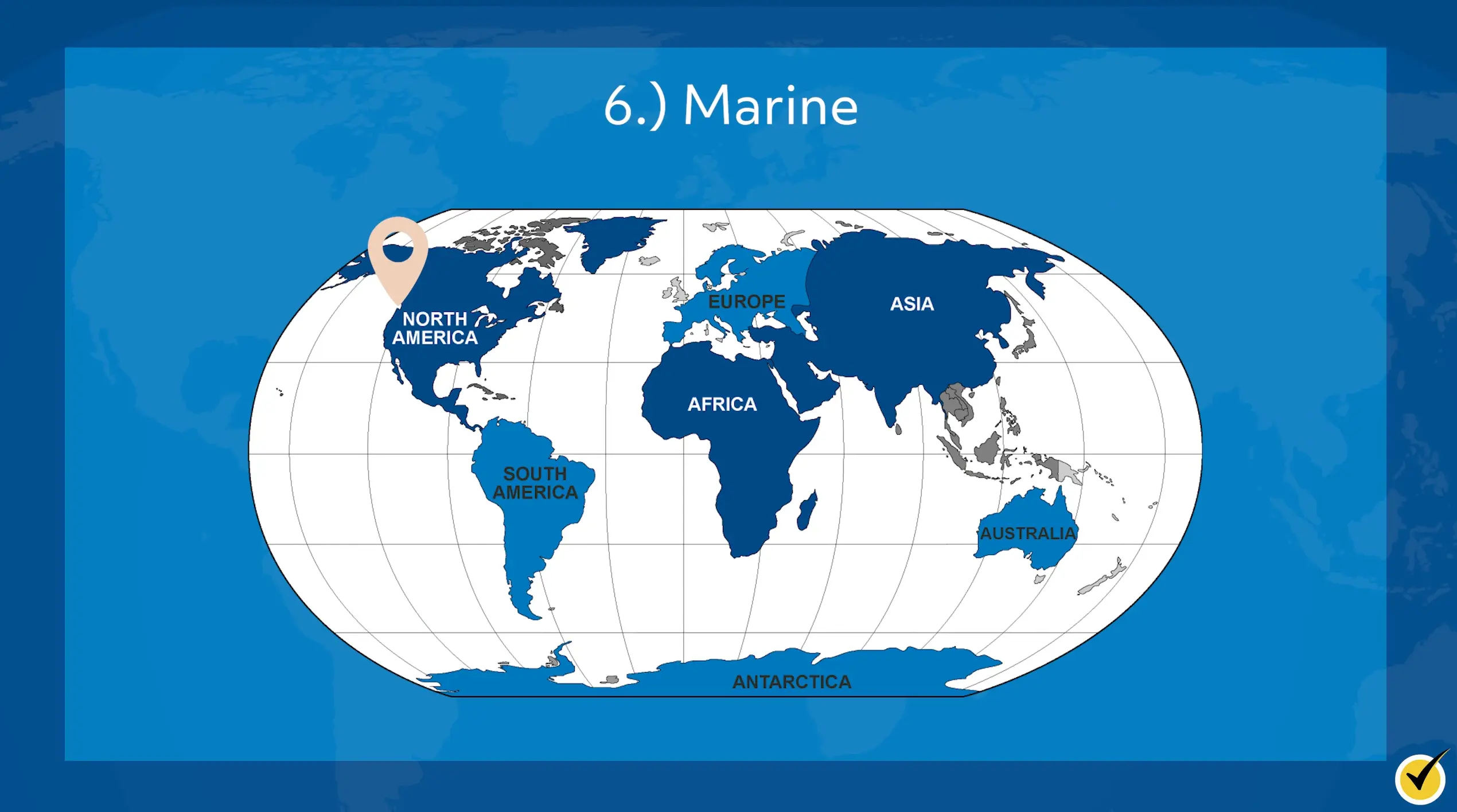
Humid-Subtropical
Humid-subtropical environments are often present on the eastern side of continents between latitudes 25°-35°N/S. They are characterized by hot summers and mild winters, with high humidity present year-round. This interaction of heat and precipitation can lead to hurricane-type storms, such as occur in Florida and the Gulf of Mexico.

As a quick sidenote here, the distribution of the last three climates (Humid-continental, Taiga, and Tundra) is mainly due to the lack of landmass at the higher southern latitudes outside of the Antarctic Circle.
Humi-Continental
Humid-continental climates generally only occur between 30°N-60°N and can be called the “catch-all” category, containing the climate zones that do not fall into any other category. These types of areas experience large changes in seasonal temperatures, with hot, humid summers and potentially frigid winters. By classification, they CANNOT be arid or semi-arid environments. Scandinavia and the American Midwest are examples of this climate.

Taiga
Taiga exists mostly at high northern latitudes, from 50°N to approximately 70°N. Containing the most northern reaching coniferous forests on the planet, these climates receive massive amounts of precipitation, up to 80 inches a year. Despite most of this being received in the form of snowfall, summer temperatures are warm enough to melt any potential permafrost formed during the winter. Much of the southern parts of Canada, Alaska, and Russia are dominated by taiga forests.
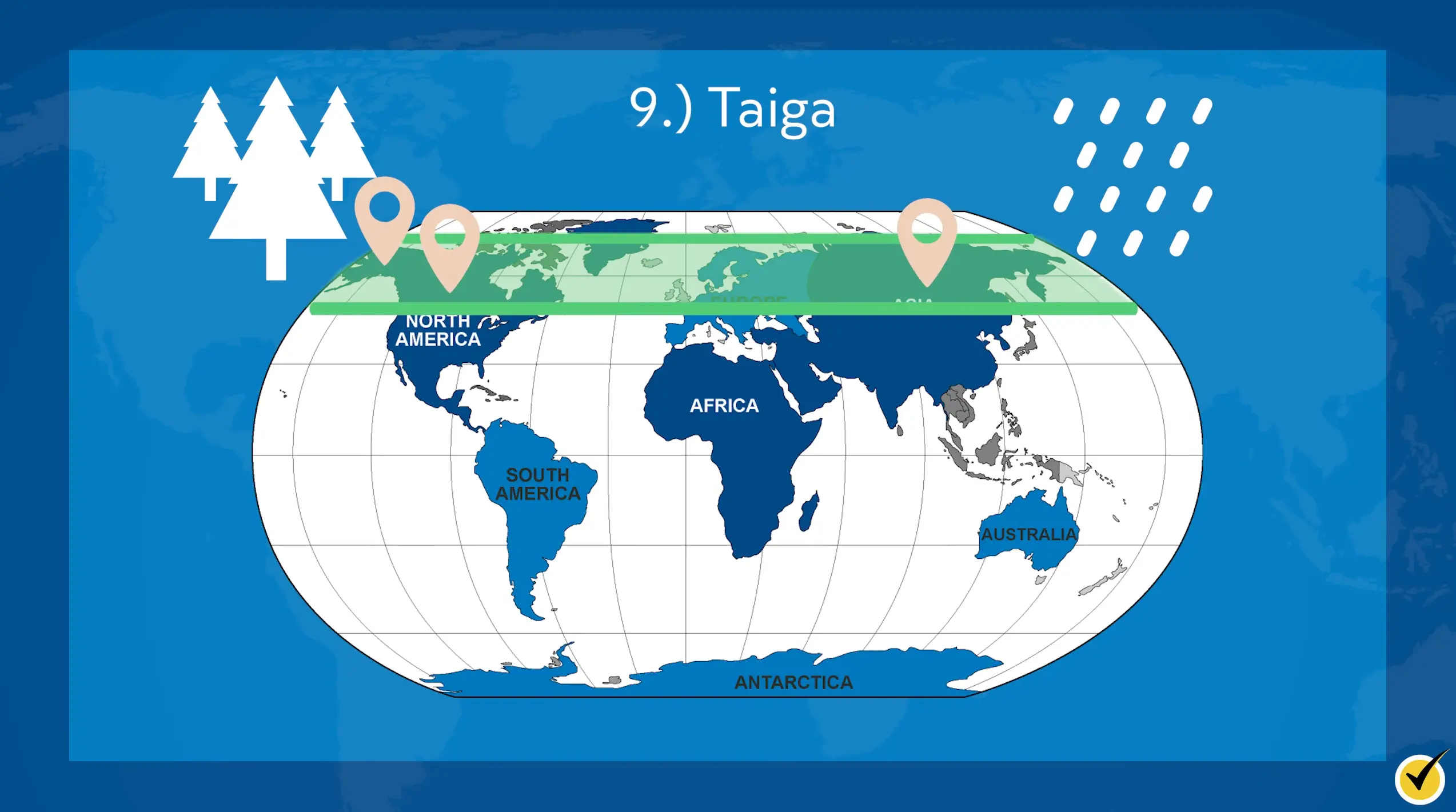
Tundra
Tundra environments are found almost exclusively at high latitudes where surface temperatures reach the lowest on the planet, averaging below 23°F year-round. Due to these low temperatures, permafrost forms in the ground, greatly reducing or eliminating plant life (specifically trees). These barren aspects become the defining characteristics of this climate’s landscape and separate it from Taiga. The majority of Tundra can be found in the Arctic Circles, with the northern reaches of Canada, Alaska, and Russia being covered by tundra.

Ok, now that we’ve taken a closer look at these climates, let’s see how much you remember:
1. Which of the following is not often considered a major component determining climate?
- Latitude
- Longitude
- Elevation
- Precipitation
2. Which climate is not generally restricted to the Northern hemisphere?
- Taiga
- Humid-Continental
- Tundra
- Desert
Thanks for watching, and happy studying!

